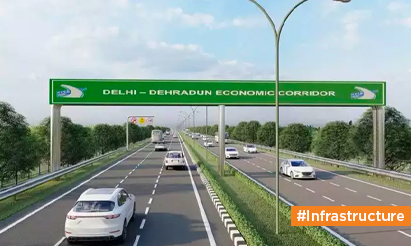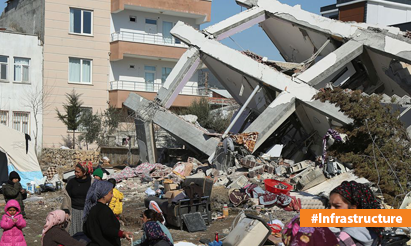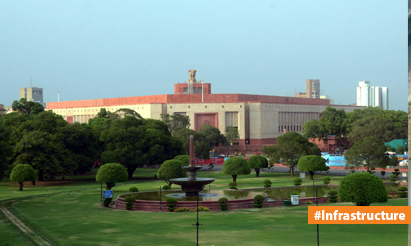Atal Setu: All you need to know about India’s longest sea bridge
In the realm of infrastructure and engineering marvels, India has added another feather to its cap with the inauguration of Atal Setu, the nation’s longest sea bridge. Named after the visionary former Prime Minister of India, Atal Bihari Vajpayee, this bridge is not just a physical connection but a symbol of progress, connectivity, and resilience. In this article, we will delve into the various aspects of Atal Setu, exploring its significance, engineering intricacies, and the impact it is expected to have on the region.
Historical Context:
The idea of connecting islands and coastal areas through bridges has been a longstanding aspiration for India, given the strategic and economic benefits associated with such infrastructure. The construction of Atal Setu marks a significant milestone in the realization of this vision. The bridge is part of a larger infrastructure initiative aimed at boosting connectivity and development in the coastal regions.
Geographical Significance:
Atal Setu spans across the vast expanse of the Arabian Sea, connecting two key coastal regions. The bridge links the mainland with an island, providing a vital lifeline for the communities residing in these areas. Geographically, the bridge serves as a critical link between two points that were previously accessible only through ferries or other water transport means.
Engineering Marvel:
The construction of Atal Setu is a testament to India’s prowess in civil engineering and project execution. The bridge is designed to withstand the challenges posed by the dynamic marine environment, including high tides, strong currents, and seismic activities. Engineers have employed state-of-the-art technologies and materials to ensure the durability and longevity of the structure.
Key Features of Atal Setu:
- Length and Span: Atal Setu boasts an impressive length, making it the longest sea bridge in India. The total span of the bridge is a remarkable feat of engineering, requiring meticulous planning and precision in execution.
- Architectural Design: The architectural design of Atal Setu is not just functional but also aesthetically pleasing. The bridge’s design takes into account both form and function, creating a structure that complements the natural beauty of the surrounding environment.
- Materials Used: The construction of Atal Setu involved the use of advanced materials that can withstand the corrosive effects of saltwater and other environmental factors. The selection of materials reflects a commitment to ensuring the longevity and structural integrity of the bridge.
- Connectivity Impact: The completion of Atal Setu has a profound impact on connectivity in the region. It significantly reduces travel time between the mainland and the island, fostering economic growth, tourism, and trade. The improved accessibility also has social implications, bringing communities closer and facilitating cultural exchange.
Economic and Social Implications:
The inauguration of Atal Setu has far-reaching economic and social implications for the regions it connects. The enhanced connectivity is expected to stimulate economic activities, opening up new opportunities for trade and commerce. Local businesses are likely to benefit from increased access to markets, while the tourism sector may experience a boost due to easier accessibility to scenic coastal areas.
Moreover, the bridge contributes to the overall development of the connected regions by providing better access to education, healthcare, and other essential services. The improved connectivity is expected to attract investments and spur infrastructural development in the areas surrounding the bridge.
Environmental Considerations:
While celebrating the engineering marvel of Atal Setu, it is crucial to consider the environmental impact of such large-scale projects. The construction and maintenance of the bridge may have ecological consequences, affecting marine life and the surrounding ecosystem. Environmentalists and policymakers must work collaboratively to implement sustainable practices and mitigate any adverse effects on the environment.
Challenges and Future Prospects:
Despite its numerous benefits, the construction and maintenance of a sea bridge of this magnitude come with their own set of challenges. These challenges include not only technical and engineering issues but also socio-economic and environmental considerations. Regular maintenance, safety measures, and ongoing monitoring are essential to ensure the sustained functionality of Atal Setu.
Looking ahead, the success of Atal Setu may pave the way for similar infrastructure projects across the country. As India continues to prioritize connectivity and development, sea bridges like Atal Setu could become a model for future initiatives, providing solutions to geographical challenges and fostering economic growth.
Conclusion:
Atal Setu stands as a testament to India’s commitment to progress and development. This engineering marvel not only connects two coastal regions but also symbolizes the spirit of resilience and determination. As the longest sea bridge in India, Atal Setu is poised to transform the socio-economic landscape of the connected regions, bringing about positive changes in trade, tourism, and overall quality of life. While celebrating this achievement, it is essential for stakeholders to remain vigilant about the environmental impact and work towards sustainable practices for the continued success of such ambitious projects.
Disclaimer: The views expressed above are for informational purposes only based on industry reports and related news stories. PropertyPistol does not guarantee the accuracy, completeness, or reliability of the information and shall not be held responsible for any action taken based on the published information.




